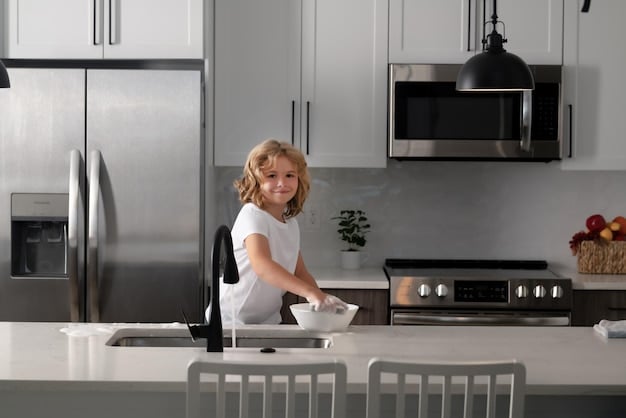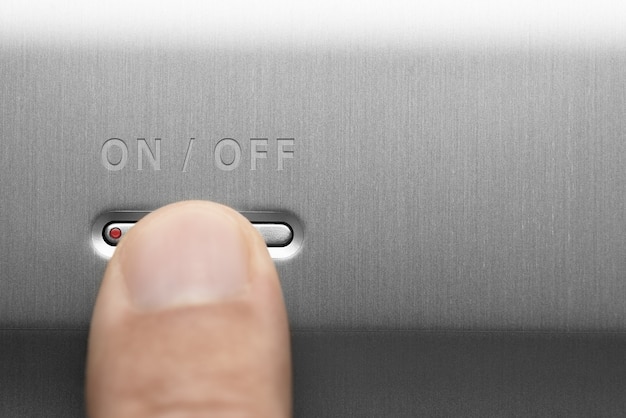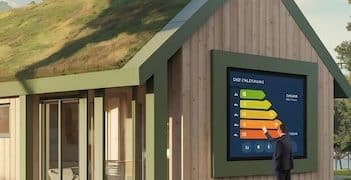Claim Your Share: Updated Energy Star Appliance Rebates in January

Updated Energy Star appliance rebates offer eligible U.S. residents up to $750 back this January on qualifying energy-efficient appliances, helping to reduce energy consumption and lower utility bills while promoting environmental sustainability.
Are you looking to upgrade your home appliances and save money at the same time? The updated Energy Star appliance rebates for this January provide a fantastic opportunity for U.S. residents to claim up to $750 back on qualifying energy-efficient appliances.
Understanding Energy Star Appliance Rebates
Energy Star appliance rebates are incentives offered to consumers who purchase appliances that meet specific energy efficiency standards set by the Environmental Protection Agency (EPA). These rebates aim to encourage the use of energy-efficient products, thereby reducing energy consumption and lowering utility bills. By participating in these rebate programs, consumers not only save money but also contribute to a more sustainable environment.
These rebates are typically available on a variety of appliances, including refrigerators, washing machines, dishwashers, and air conditioners. The specific requirements and rebate amounts vary depending on the state, utility company, and the appliance itself.
How Energy Star Certification Works
The Energy Star certification process ensures that products meet strict energy efficiency guidelines set by the EPA. Manufacturers must subject their products to rigorous testing to demonstrate that they meet these standards. Once certified, appliances are allowed to display the Energy Star label, making it easy for consumers to identify energy-saving options.
The EPA regularly updates these standards to reflect advancements in technology and ensure that Energy Star certified products continue to represent top-tier energy performance. This ongoing process helps drive innovation and ensures consumers are getting the most efficient products available.
- Rigorous Testing: Products undergo thorough testing to meet EPA standards.
- Easy Identification: Certified appliances display the Energy Star label.
- Regular Updates: Standards are updated to reflect technological advancements.
In conclusion, Energy Star appliance rebates are a win-win for consumers and the environment. By understanding how these rebates work and choosing Energy Star certified appliances, you can save money on your utility bills and contribute to a sustainable future.

Navigating Rebate Programs in January
Navigating the various rebate programs available in January can seem daunting, but with a clear understanding of the requirements and a bit of research, you can easily claim your share of the savings. Different states and utility companies offer different rebate programs, each with its own set of rules and eligibility criteria. Some states may offer direct rebates, while others provide tax credits or other incentives.
To effectively navigate these programs, start by researching the specific rebates available in your area. Utility company websites and state energy offices are excellent resources for finding detailed information on eligibility requirements, application procedures, and rebate amounts. Keep in mind that many rebates have specific deadlines or limited funding, so it is crucial to act quickly.
Step-by-Step Guide to Claiming Rebates
Claiming your appliance rebates involves several key steps. First, identify the eligible appliances you plan to purchase. Ensure that these appliances are Energy Star certified and meet any additional requirements set by your state or utility company. Next, carefully review the application process, gathering all necessary documentation, such as purchase receipts, model numbers, and Energy Star certification details. Finally, submit your application within the specified timeframe.
Keep records of all documents submitted during the application process. This will help track the progress of your claim and provide evidence in case of any discrepancies. Understanding and following these steps is crucial for a smooth and successful rebate claim.
- Research Local Programs: Check utility company and state energy office websites.
- Identify Eligible Appliances: Ensure appliances are Energy Star certified.
- Gather Documentation: Collect purchase receipts and Energy Star details.
In conclusion, successfully navigating rebate programs in January requires diligent research and careful attention to detail. By understanding the specific requirements and following the application process closely, you can maximize your savings and enjoy the benefits of energy-efficient appliances.
Maximizing Your $750 Rebate Potential
To truly maximize your rebate potential and claim up to $750 this January, strategic planning and informed decision-making are essential. Start by identifying the appliances in your home that are the least energy-efficient and consider replacing them with Energy Star certified models. Focus on appliances that consume a significant amount of energy, such as refrigerators, air conditioners, and washing machines.
One effective strategy is to combine multiple rebates by purchasing several eligible appliances at once. Many programs offer additional incentives for consumers who upgrade multiple appliances simultaneously. Before making any purchases, carefully assess your household’s energy needs and prioritize appliances that will have the greatest impact on your energy consumption and savings.
Bundling Appliances for Greater Savings
Bundling the purchase of multiple Energy Star appliances can often lead to greater savings. Some rebate programs offer bonus incentives when you buy a combination of eligible appliances. For example, you might receive a higher rebate amount if you purchase both an Energy Star refrigerator and a washing machine.
Contact your local utility company or check their website to see if they offer these bundling incentives. Planning your appliance upgrades strategically can significantly increase your overall rebate amount.

- Replace Inefficient Appliances: Focus on high-energy consumption appliances.
- Combine Rebates: Purchase multiple appliances simultaneously.
- Assess Household Needs: Prioritize appliances based on energy consumption.
In conclusion, maximizing your rebate potential requires a strategic approach that combines careful planning with informed decision-making. By targeting high-energy consumption appliances and taking advantage of bundling incentives, you can achieve substantial savings and contribute to a more energy-efficient home.
Qualifying Appliances and Their Benefits
Understanding which appliances qualify for Energy Star rebates and the specific benefits they offer is crucial for making informed purchase decisions. Energy Star certified appliances are designed to use significantly less energy than standard models, resulting in lower utility bills and a smaller environmental footprint. These appliances undergo rigorous testing to ensure they meet strict energy efficiency standards, providing consumers with reliable performance and long-term savings.
Common appliances that qualify for rebates include refrigerators, washing machines, dishwashers, dryers, air conditioners, and water heaters. Each of these appliances offers unique benefits in terms of energy savings and improved performance. For example, Energy Star refrigerators often use advanced insulation and compressor technology to reduce energy consumption, while Energy Star washing machines incorporate features like high-efficiency motors and optimized water usage.
Specific Appliance Types and Rebates
Different types of appliances offer varying levels of rebates, depending on their energy efficiency and the specific requirements of the rebate programs. Refrigerators and air conditioners typically offer the highest rebate amounts due to their significant energy consumption. Washing machines and dishwashers also qualify for substantial rebates, helping you save on both water and energy bills.
Additionally, some rebate programs offer incentives for smart thermostats and other energy-saving devices that can further reduce your energy consumption and enhance your home’s efficiency.
- Refrigerators: Advanced insulation and compressor technology.
- Washing Machines: High-efficiency motors and optimized water usage.
- Air Conditioners: Significant energy savings and cooling performance.
In conclusion, understanding the qualifying appliances and their benefits allows you to make informed purchasing decisions. By investing in Energy Star certified appliances, you can enjoy long-term savings, improved performance, and a reduced environmental impact.
Impact of Rebates on Energy Consumption
Energy Star appliance rebates play a significant role in reducing overall energy consumption and promoting environmental sustainability. By encouraging consumers to purchase energy-efficient appliances, these rebates help lower the demand for electricity and reduce greenhouse gas emissions. The cumulative impact of these rebates on a national scale is substantial, contributing to a more sustainable energy future.
The reduction in energy consumption translates to tangible benefits for both consumers and the environment. Lower electricity bills help households save money, while reduced greenhouse gas emissions contribute to cleaner air and a healthier planet. Energy Star appliance rebates are an effective tool for driving energy efficiency and fostering a culture of environmental stewardship.
Long-Term Environmental Benefits
The long-term environmental benefits of Energy Star appliance rebates are numerous and far-reaching. Reduced energy consumption leads to lower carbon emissions, mitigating the effects of climate change. Efficient appliances also reduce the strain on natural resources, conserving water and other vital resources.
Furthermore, the widespread adoption of energy-efficient appliances promotes innovation and drives the development of even more sustainable technologies.
- Lower Electricity Demand: Reduces strain on power grids.
- Reduced Greenhouse Gas Emissions: Mitigates climate change effects.
- Conservation of Resources: Saves water and other vital resources.
In conclusion, the impact of Energy Star appliance rebates on energy consumption is profound and multi-faceted. By encouraging the adoption of energy-efficient technologies, these rebates contribute to a more sustainable, resilient, and environmentally responsible future.
Planning Your Appliance Upgrade This January
Planning your appliance upgrade this January involves careful consideration of your household’s needs, potential energy savings, and available rebates. Start by conducting an energy audit of your home to identify the appliances that consume the most energy. This will help you prioritize your upgrades and focus on the appliances that offer the greatest potential for savings.
Next, research the available rebates and incentives in your area, paying close attention to eligibility requirements, application deadlines, and rebate amounts. Develop a budget that takes into account the cost of new appliances, potential rebates, and long-term energy savings. Consider visiting appliance stores or researching online to compare different models and find the best options for your needs.
Tips for a Smooth Upgrade Process
A smooth appliance upgrade process requires careful planning and attention to detail. Before purchasing new appliances, measure the available space in your home to ensure they will fit properly. Dispose of old appliances responsibly, either by donating them to charity or recycling them through a local program. Schedule the installation of new appliances in advance to minimize disruption to your household.
Finally, keep track of all receipts, model numbers, and Energy Star certification details for rebate applications. Consider consulting with a professional energy auditor or contractor to assess your home’s energy efficiency and identify additional opportunities for savings.
- Conduct Energy Audit: Identify high-consumption appliances.
- Research Rebates: Pay attention to requirements and deadlines.
- Measure Available Space: Ensure new appliances fit properly.
In conclusion, planning your appliance upgrade this January is a comprehensive process that requires careful consideration of multiple factors. By conducting an energy audit, researching rebates, and following these tips, you can achieve significant savings and improve your home’s energy efficiency.
| Key Point | Brief Description |
|---|---|
| 💰 Rebate Opportunity | Claim up to $750 back on Energy Star appliances this January. |
| ✅ Qualifying Appliances | Refrigerators, washing machines, dishwashers, and more. |
| 📝 Application Steps | Research, identify, document, and submit within deadlines. |
| 💡 Maximizing Savings | Bundle purchases and prioritize high-energy consumption appliances. |
Frequently Asked Questions
▼
An Energy Star appliance rebate is an incentive offered to consumers who purchase appliances that meet specific energy efficiency standards set by the EPA, encouraging the use of energy-efficient products.
▼
You can find available rebates by checking your local utility company’s website or visiting your state’s energy office website. These resources provide detailed information on eligibility requirements and application procedures.
▼
Common appliances that qualify for rebates include refrigerators, washing machines, dishwashers, air conditioners, and water heaters. These appliances must be Energy Star certified to be eligible for rebates.
▼
Typically, you will need your purchase receipt, the appliance’s model number, and proof of Energy Star certification. Some programs may require additional documentation, so it is important to review the specific requirements.
▼
Yes, some rebate programs offer bonus incentives when you purchase multiple eligible appliances simultaneously. Contact your local utility company to inquire about bundling incentives and maximize your savings.
Conclusion
The updated Energy Star appliance rebates for this January offer a significant opportunity for U.S. residents to save money, reduce energy consumption, and contribute to a more sustainable environment. By understanding the available rebates, qualifying appliances, and application process, you can make informed decisions and claim your share of the savings.





